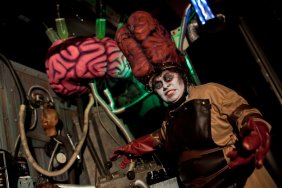A brain implant has allowed paralyzed monkeys with spinal-cord injuries to walk again, with new experiments leading to the creation of a wireless device that could prove to have ground-breaking ramifications for science.
Neuroscientist Grégoire Courtine has been conducting experiments in China for over a decade, with him now reporting the extent of these experiments from his Beijing lab, revealing that the wireless brain implant he has used to help monkeys with spinal-cord issues has allowed them to walk once again. The device works by way of recording electrical signals from the brain’s motor cortex, which controls movement, with it then stimulating electrodes in the leg by sending these signals to a computer. With paralysis being the result of broken signals between the brain and the spinal cord, the computer translates the recorded signals into a language that can be understood by the electrodes, which then worked to help the monkeys regain control of their paralyses limbs.
The experiments, which took place in China as a result of the country’s less strict laws in regards to animal testing, saw two monkeys being paralyzed by Courtine’s team in order to carry out the trials. With both monkeys having a hind leg paralyzed, the wireless device enabled both of them to move all four legs in tandem once again, with them able to move as they would before their paralysis and without being wired to a central computer, as has been the case in similar experiments.
Courtine’s work was published by Nature, alongside the following video explaining the experiments:
The experiments follow years of similar work on rats, though these successful tests on monkeys presents the next step towards employing this technology with human subjects. However, this will present a much greater challenge for Courtine and his team, with them facing a number of hurdles when it comes to helping people who have suffered spinal-cord injuries.
Firstly, Courtine recorded electrical activity before the monkeys were paralyzed in order to allow the brain implant to successfully play them back, which would not be available to those who have already suffered a spinal-cord injury. Secondly, the current research doesn’t take into account walking patterns demonstrated by humans but not by monkeys thus making the process much more complex. However, Courtine has started a clinical trial CHUV University Hospital of Lausanne, with electric-pulse generators having been implanted in the lower spines of two paralyzed people, though the current set-up will not allow them to walk without the aid of Courtine and his team controlling their movement. Courtine is currently traveling back and forth between Switzerland and China, in the hopes that these experiments will eventually lead to a major breakthrough that will help those with spinal-cord injuries be able to walk once again.








